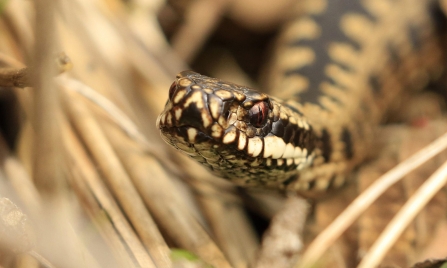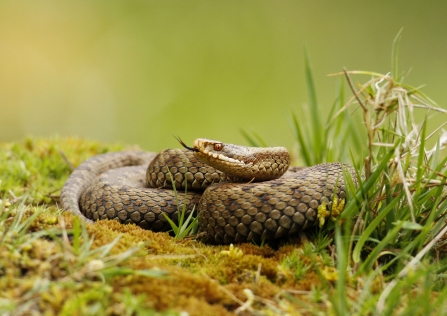Ecology
Adders are a member of the viper family, Viperidae, which are classified by hollow, venom-conducting fangs in the upper jaw.
Adders are around 60-80cm long and can live up to 15 years. Like all snakes, Adders are ectothermic, which means they gain their heat from external sources, so they thermoregulate by basking in the sunshine to raise their body temperatures, unlike mammals which can regulate their body temperatures internally.
The ‘Adder dance’ can be seen from April onwards, where two males will wrestle energetically to win the right to mate with the female, however, females can mate with several males during a mating season and can also preserve and use sperm from previous mates. Females are ovoviviparous, meaning they incubate the eggs internally and the young are born live. Males are usually spotted earlier than females as they move around in search for a mate.



